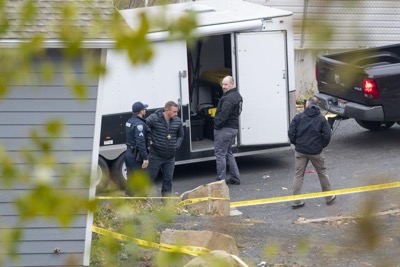 Excellent article from Marty Trillhaase on the mass murder in Moscow, ID.
Excellent article from Marty Trillhaase on the mass murder in Moscow, ID.
I’m reproducing it here in full. You can read the original over at the Moscow-Pullman Daily News website.
After four University of Idaho students were stabbed to death in a Moscow residence by an assailant who remains at large, law enforcement continued to assure the broader community that it was under no ongoing threat.
By the time Moscow Police walked that back in a press conference Wednesday — at least in tone if not in substance — the statement had lost all credibility. In the process, they exposed the community and the UI to unnecessary risk.
From the beginning, Moscow Police confronted a bizarre case. The murderer killed with a knife. Even though the individual moved within an urban setting early enough Sunday morning for some college students to still be up, the perpetrator acted with stealth. So police did not learn of the case for at least eight hours and by then, the crime scene may have gone cold.
They have no suspect in custody.
They have no murder weapon.
A killer who committed a mass murder in such a fashion and then escaped detection heaped rarity upon rarity. Pursuing this case would tax the resources of larger law enforcement departments in Spokane or Boise, let alone one that operates in a community of 26,000 permanent residents and another 11,000 college students.
But to say this was a “targeted attack” without knowing the person’s identity was beyond belief.
If the police have a person of interest, a witness or have merely executed a search warrant, they haven’t said so.
Even if this was someone who targeted his victims on Sunday, that individual has spent four days desperately on the run in the midst of a national crime search. Under such circumstances, how can anyone predict with any confidence what that individual might do next?
It became even more difficult to take things on faith when local officials involved issued conflicting statements depending on who was speaking to which media outlet.
Possibly starstruck when the New York Times called, Moscow Mayor Art Bettge called the homicide a “crime of passion.” Once the Idaho Statesman of Boise got in touch, Bettge started backpedaling: “It could be any number of things. … The police don’t know yet. I haven’t been told.”
Speaking to the Statesman, Moscow Police Capt. Anthony Dahlinger almost sounded reluctant to characterize the episode as violent: “All I can say is the deaths are ruled a homicide at this point, and homicide and murder are synonymous. … We certainly have a crime here, so we are looking for a suspect.”
Meanwhile, veteran Latah County Prosecutor William Thompson told The Associated Press the police department’s assurances contradicted the facts — at least those the public had been provided.
“Obviously, there’s no way police can say there’s no risk, but what they’re seeing indicates that there’s not a risk that this person will randomly attack people,” he said.
Random?
He continued: “I don’t think they’re going to foreclose the possibility that it could be one or more people, but right now they don’t know who is responsible.”
All of which created the impression of a murder investigation mired in chaos.
Wednesday’s press conference struck some of the needed notes. If anything, this demands even more candor in the days ahead.
Expecting the public to remain in the dark breeds suspicion, invites rumor mongering and spreads fear — whether it’s well-grounded or not.
A murder is a public event.
It requires the cops to be forthright with what they know — and what they don’t.
People have every right to protect themselves.
They also have the obligation to be vigilant and pass along to police what they see and what they hear.
How else does local law enforcement expect to find the answers that have eluded them so far?
— Marty Trillhaase